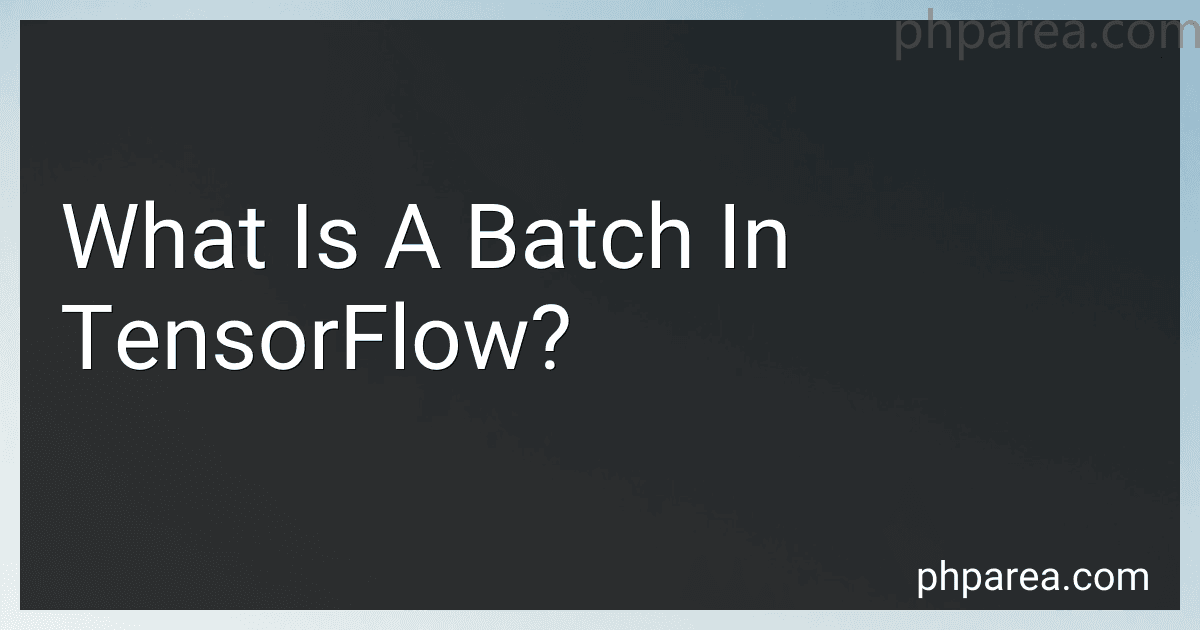Best TensorFlow Learning Guides to Buy in December 2025
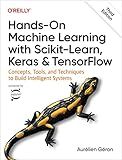
Hands-On Machine Learning with Scikit-Learn, Keras, and TensorFlow: Concepts, Tools, and Techniques to Build Intelligent Systems
- TRACK ML PROJECTS END-TO-END USING SCIKIT-LEARN EFFICIENTLY.
- EXPLORE ADVANCED MODELS LIKE SVMS, DECISION TREES, AND RANDOM FORESTS.
- BUILD NEURAL NETS FOR DIVERSE APPLICATIONS USING TENSORFLOW AND KERAS.



Hands-On Machine Learning with Scikit-Learn, Keras, and TensorFlow: Concepts, Tools, and Techniques to Build Intelligent Systems


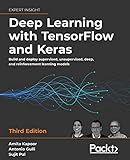
Deep Learning with TensorFlow and Keras: Build and deploy supervised, unsupervised, deep, and reinforcement learning models, 3rd Edition


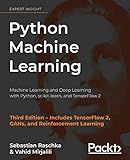
Python Machine Learning: Machine Learning and Deep Learning with Python, scikit-learn, and TensorFlow 2, 3rd Edition



TinyML: Machine Learning with TensorFlow Lite on Arduino and Ultra-Low-Power Microcontrollers



Hands-On Machine Learning with Scikit-Learn and TensorFlow: Concepts, Tools, and Techniques to Build Intelligent Systems


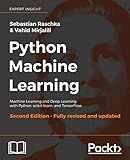
Python Machine Learning - Second Edition: Machine Learning and Deep Learning with Python, scikit-learn, and TensorFlow


A batch in TensorFlow refers to a set of input data samples that are processed together in one iteration of the training or inference algorithm. It is a commonly used concept in deep learning frameworks, including TensorFlow, to improve computational efficiency.
When training a deep learning model, it is often inefficient to process the entire dataset at once due to memory constraints or limited computational resources. Hence, the dataset is divided into smaller subsets called batches. Each batch contains several data samples, typically with the same size and shape.
During training, the model computes the forward pass and calculates the loss function for each sample in the batch. It then performs backpropagation to adjust the model's parameters based on the accumulated gradients from the entire batch. This process significantly reduces the time and memory requirements compared to processing each sample individually.
Batches play a crucial role in stochastic gradient descent (SGD) optimization, where the model's parameters are updated using the gradients computed over a batch, rather than the entire dataset. By randomly shuffling and iterating through batches in each training epoch, the model can learn from different subsets of the data, leading to better generalization and optimization.
In TensorFlow, batches are commonly represented as multi-dimensional arrays called tensors. Each dimension of the tensor corresponds to the batch size, enabling efficient parallel computation on modern hardware, such as GPUs. Additionally, TensorFlow provides flexible functions and APIs to handle batching and manage data pipelines efficiently, allowing users to easily implement batch processing in their deep learning workflows.
How to resize images within a batch in TensorFlow?
To resize images within a batch in TensorFlow, you can use the tf.image.resize() function. Here's an example of how you can do it:
import tensorflow as tf
Assuming you have a batch of images stored as a tensor
batch_images = ... # Shape: [batch_size, height, width, channels]
Specify the target height and width for resizing
target_height = ... target_width = ...
Resize images within the batch
resized_images = tf.image.resize(batch_images, [target_height, target_width])
In the above code, tf.image.resize() is used to resize the batch of images to the specified target height and width. The resized_images will have the shape [batch_size, target_height, target_width, channels], where batch_size is the number of images in the batch, and channels is the number of color channels in the images (e.g., 3 for RGB images).
You can then use these resized images for further processing in your TensorFlow pipeline.
How to preprocess data in batches using TensorFlow?
To preprocess data in batches using TensorFlow, you can follow these steps:
- Load your data: First, load your data into TensorFlow. This can be done in various ways, depending on the format of your data (e.g., CSV files, images, text).
- Create a dataset: Once you have loaded your data, you need to create a TensorFlow Dataset object. This provides an abstraction for working with your data and allows you to easily apply transformations and iterate over it in batches.
- Preprocess the data: Use the available TensorFlow functions and operations to preprocess your data. This may include steps like scaling, normalization, one-hot encoding, etc. Apply these transformations using the methods provided by the Dataset object.
- Batch the data: Use the batch() method of the Dataset object to batch your data. Specify the desired batch size as the argument to this method. This will group your preprocessed data into batches of the specified size. Example: dataset = dataset.batch(batch_size)
- Iterate over the batches: Now, you can iterate over the batches using a loop. The Dataset object can be converted to an iterator using the as_numpy_iterator() method. This iterator can then be used to access the batches of preprocessed data. Example: for batch in dataset.as_numpy_iterator(): # Perform further operations with the batched data
Note: Throughout the process, you can chain multiple operations together using the methods provided by the Dataset object. This allows you to efficiently perform various preprocessing steps on the data before batching it.
What is the difference between a batch and a single data point in TensorFlow?
In TensorFlow, a batch refers to a group of data points that are processed together in parallel during training or inference. It is a common practice to process multiple samples simultaneously to improve computational efficiency. For example, instead of feeding a single image into a convolutional neural network (CNN), a batch of images is fed together as input.
On the other hand, a single data point refers to an individual sample or instance of data. It can be an image, audio clip, text, or any other kind of input. Single data points are typically used for prediction or evaluation once the model has been trained.
In summary, a batch is a collection of multiple data points processed simultaneously, while a single data point is an individual sample processed independently.
How to shuffle batches of data in TensorFlow?
In order to shuffle batches of data in TensorFlow, you can use the tf.data.Dataset.shuffle() function. Here is an example implementation:
- Create a TensorFlow dataset from your data:
dataset = tf.data.Dataset.from_tensor_slices((x, y))
Here, x and y are your input features and target labels.
- Specify the buffer size for shuffling. The buffer size should be set to a value larger than the number of elements in your dataset to ensure proper shuffling. For example, if you have 1000 elements, you can set the buffer size to 10000:
buffer_size = 10000
- Shuffle the dataset using the shuffle() function, specifying the buffer size:
dataset = dataset.shuffle(buffer_size)
- Create your batches using the batch() function, specifying the desired batch size:
batch_size = 32 dataset = dataset.batch(batch_size)
Now, when you iterate over the dataset, you will get shuffled batches of data.
Here is the complete code snippet:
import tensorflow as tf
Step 1: Create TensorFlow dataset
dataset = tf.data.Dataset.from_tensor_slices((x, y))
Step 2: Specify the buffer size for shuffling
buffer_size = 10000
Step 3: Shuffle the dataset
dataset = dataset.shuffle(buffer_size)
Step 4: Create batches
batch_size = 32 dataset = dataset.batch(batch_size)
You can then iterate over the dataset using a for loop to access the shuffled batches:
for (batch_x, batch_y) in dataset: # Use the shuffled batch of data ...
What is adaptive gradient batch normalization in TensorFlow?
Adaptive gradient batch normalization, also known as AdaBN, is a technique used in TensorFlow to normalize the activations of a neural network model. It performs normalization similar to batch normalization, but with an additional adaptivity element that makes it suitable for transfer learning scenarios.
In standard batch normalization, the mean and variance of the inputs are calculated across the entire batch during training. These statistics are then used to normalize the inputs within the batch. This approach assumes that the batch statistics generalize well to the entire dataset.
Adaptive gradient batch normalization, on the other hand, calculates the mean and variance of the inputs for each individual sample in the batch. It uses these per-sample statistics to normalize the inputs. This adaptivity enables better handling of situations where the batch statistics do not sufficiently represent the dataset, such as during transfer learning when using pretrained models with different distributions of data.
By considering individual sample statistics, adaptive gradient batch normalization allows the model to gradually adjust to the new dataset's statistics without relying heavily on the pretrained network's batch statistics. This can lead to improved performance, especially in scenarios with limited new data.
In TensorFlow, adaptive gradient batch normalization can be implemented by using the tf.keras.layers.experimental.SyncBatchNormalization layer with the training=True argument set accordingly. The layer adapts the mean and variance based on per-sample statistics during training, providing the benefits of adaptive gradient batch normalization.
